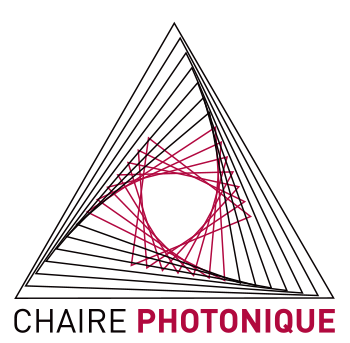Revolution is ongoing regarding ways to guide light.
Another ongoing revolution is the one of transport and storage of information. Today guided in networks of optical fibers, high speed information shall be guided tomorrow in photonic components most probably integrated in silicon chips. New solutions for light guiding shall be developed in order to reduce energy consumption and to account for the extremely fast propagation of light pulses. Light pulses being propagated at speed beyond several hundreds of thousands of kilometers per second (group velocity close to the speed of light in vacuum), the processing of these light pulses in physical systems requires to slow down these light pulses. Furthermore, for the purpose of reducing energy cost, it is interesting to develop solutions in which light is self-guided within a waveguide that is induced by light itself (all-optical waveguiding and routing).
Our speciality: to study the propagation of light in optical nonlinear materials.
We think that these two challenges can be addressed by exploiting the richness of nonlinear light dynamics. We study since several years the propagation of light in nonlinear materials, i.e. materials in which light interacts nonlinearly with matter. More specifically we are specialized in the understanding and applications of photorefractive materials.
The photorefractive effect is a nonlinear effect that consists of the local modification of the refractive index induced by light. When a single laser beam is launched on the input face of a photorefractive material, the refractive index increases locally due to the Pockels effect leading to self-focusing of the laser beam. This self-focusing can be stable and exactly compensate the natural light diffraction: the laser beam does not diffract anymore and the resulting light structure is called a “spatial soliton”. If the illumation pattern on the material is periodic, then a refractive index grating can be created within the photorefractive cristal thanks to a mechanism called two-wave mixing. Our research projects aim at studying, theoretically and experimentally, the control of light by light in photorefractive materials: we are interested in the photorefractive writing of all-optical waveguides as well as in the control of spatiotemporal instabilities in photorefractive optical cavities.
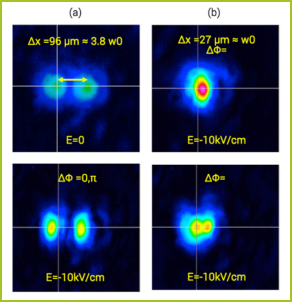
Formation et interaction de solutons optiques
We study the spatial self-organisation of light…Tomorrow we will be able to write information in a matrix of spatial localized structures.
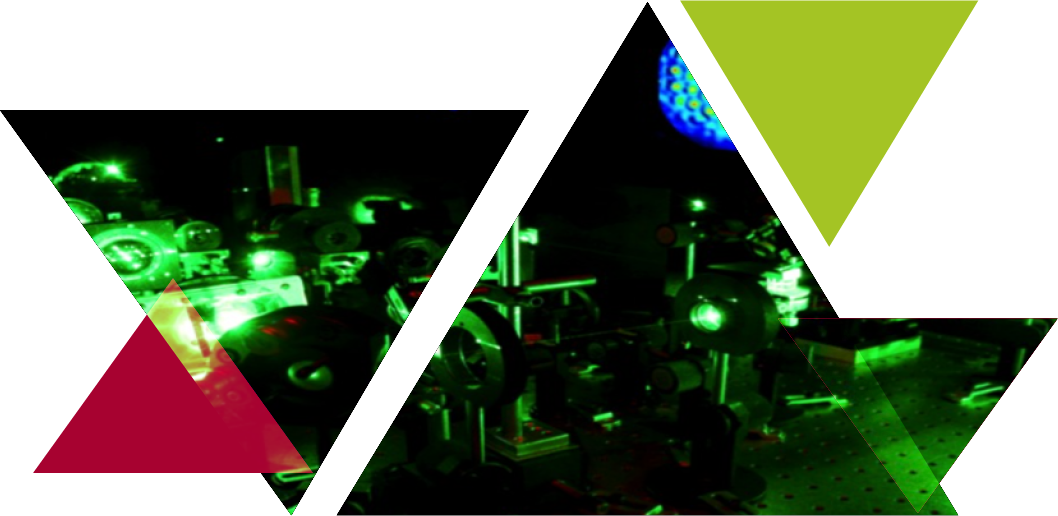
Formation d’une structure auto-organisée de lumière (pattern optique)
In a configuration of counter-propagating beams, the incident laser beam can become unstable as a result of so-called modulation instability leading to the spontaneous formation of self-organised spatial structures also called “patterns”. The possibility to spontaneously form a regular spatial structure (pattern) out of an initially homogeneous structure has been initially introduced by Alan Turing. That mechanism of modulation instability allowing the formation of self-organized spatial structures has since been demonstrated experimentally in numerous photonic systems in which the nonlinear optical material is either based on atomic vapors, liquid cristals, organic thin films or even photorefractive crystals. We are working more specifically on the control of spatial structures in a photorefractive crystal with a feedback mirror.
Light does not necessarily propagate straight.
Our group is also one of the first to study theoretically and experimentally the propagation of an accelerating beam in a photorefractive material. By accelerating beam we mean an optical beam in which the trajectory is not straight but parabolic, hence implying an accelerating as the beam propagates. Among accelerating beams we are mostly interested in the Airy beams. These beams have a transverse intensity profile that follows the so-called Airy mathematical function that has been demonstrated as being one of the solution for electronic waves satisfying the Schrodinger equation in quantum physics. That intensity profile can be realized optically thanks to the engineering of the laser beam phase profile with a spatial light modulator (SLM). With such a transverse intensity distribution, the optical beam propagates in air with a parabolic trajectory, similarly to a particle that experiences gravity. Beyond its accelerating property, the optical Airy beam is also very weakly diffracting when compared to a Gaussian beam and has self-healing property when an obstacle is inserted in its path.
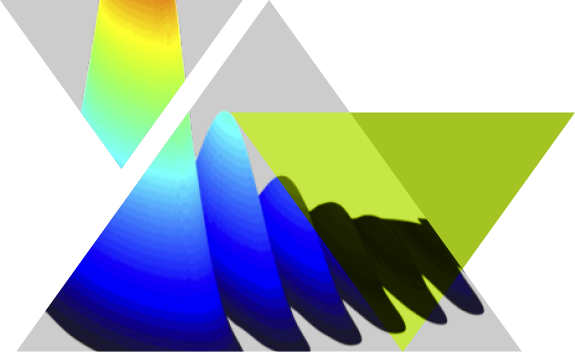
Propagation non-linéaire d’un faisceau optique d’Airy
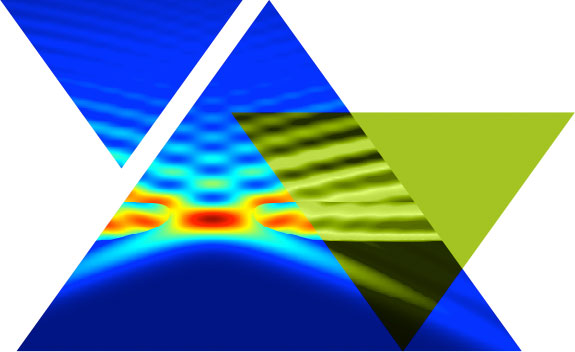
Propagation non-linéaire d’un faisceau d’Airy
Our group has demonstrated that when an optical Airy beam propagates in a photorefractive material, the Airy beam generates a so-called “off-shooting soliton” that has properties similar to photorefractive spatial solitons created by Gaussian beams. In particular, the interaction of several such solitons created by Airy beams leads to photoinduced and therefore reconfigurable waveguides with complex geometries. All-optical waveguiding with several inputs and several outputs and very good coupling efficiencies have therefore been demonstrated by our group using interactions of optical Airy beams.
Our research contributions allow to study analog phenomena to those concerning waves at the surface of the ocean or experiencing gravitational lensing…all this at the scale of an optics lab.
Spatio-temporal dynamics that result from nonlinear light propagation show analogies with physical phenomena encountered in other systems.
For example we have observed that, in the conditions following which a self-organized spatial structure (optical pattern) is created, the increase of laser power leads to noise-sustained spatial structures at randomly distributed time-intervals and at randomly spaced spatial coordinates. The statistical distributions of the intensity of these localized spatial structures are similar to those of extreme events or rogue waves in ocean, i.e. intensity peaks that are greatly larger than the mean of the optical power occur rarely and spontaneously in this optical system similarly to the rare and spontaneous occurrence of rogue waves at the surface of ocean.
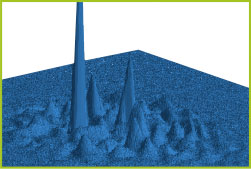
The study of nonlinear propagation of Airy beam also shows similarities with experiences dealing with gravitation: light carried by an Airy beam is deflected within the photorefractive material similarly to the deflection of light coming from the sun at the close vicinity of a gravitational mass. The strength of the photorefractive effect plays a similar role in this analog gravitational lensing effect than the mass of a planet or a star, hence allowing experiencing large-scale gravitational effects at the scale of a laboratory.
LES FONDATEURS DE LA CHAIRE








